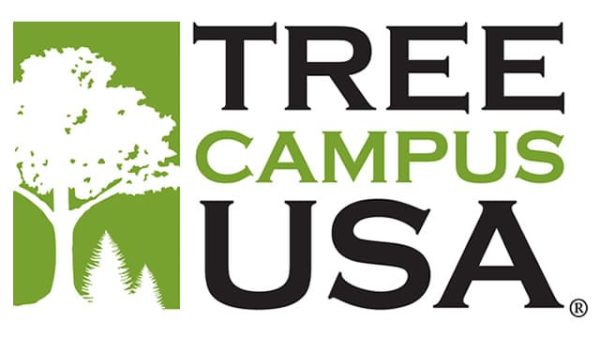Campus noted for managing healthy trees

With UNC Charlotte’s campus footprint continuing to grow, the University is taking the steps to ensure one of the its most valued natural resources is being sustained — trees.
Beyond a source of shade, trees help clean the air and add an aesthetically pleasing element to campus. UNC Charlotte’s commitment to effectively manage its tree population has led to it being named a Tree Campus USA by the Arbor Day Foundation.
“UNC Charlotte being named a Tree Campus USA underscores our commitment to create a visually appealing environment that integrates our campus architecture with the natural landscape that already exists,” said Peter Franz, campus landscape architect. “The University has remained committed to being environmentally responsible during a time of continual growth and will remain diligent as the University changes.”
UNC Charlotte joins more than 240 campuses nationwide — including eight from North Carolina — that have earned the Tree Campus USA designation by meeting five standards developed to promote healthy trees and student involvement.
Requirements include forming a campus tree advisory committee, developing a campus tree care plan, creating a campus tree program with dedicated annual expenditures, observing Arbor Day and implementing a service learning project.
As a Tree Campus USA designee, the University continues to manage its campus trees, and it strives to engage its student population to use service learning opportunities on campus and in the community through initiatives such as the UNC Charlotte Earth Club, the Charlotte Green Initiative and the annual campus cleanup. For several years, the facilities management grounds and recycling units have conducted tree plantings as part of the campus cleanups.
While some of these initiatives have a broader sustainability emphasis, the focus on trees is in direct support of the University’s sustainability mission, Franz said. He noted that commitment to trees can, in turn, significantly reduce the amount of energy a campus and community needs to generate.
Franz said the University’s latest tree-focused effort is the “Tree Replacement Project.” While planting new trees is important as the campus grows, maintaining and replacing aging trees affected by the expanding campus environment is vital.
A number of campus trees’ quality and health have been influenced by a variety of conditions. The replacement program is seeking to move or replace damaged trees with fresh trees that will provide great streetscapes and longer bloom times to keep the campus looking beautiful and vibrant as much as possible.